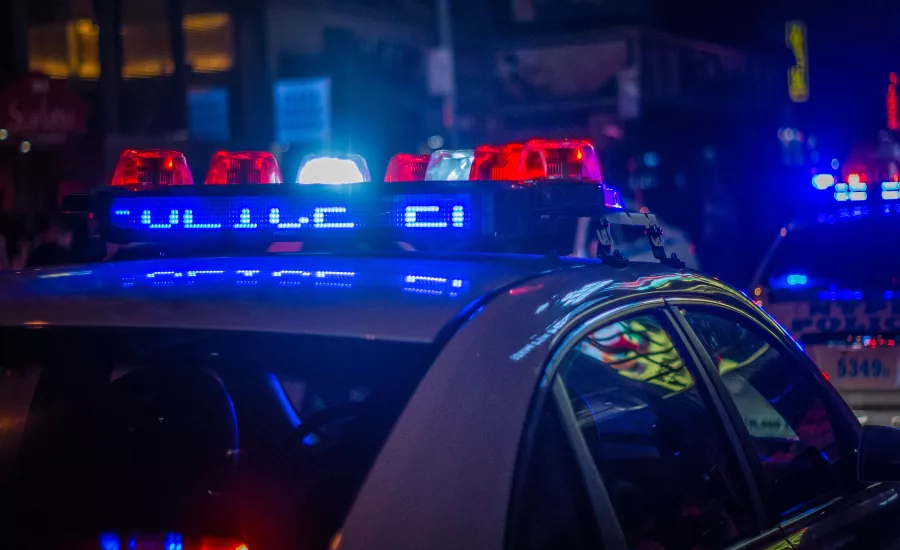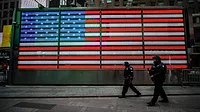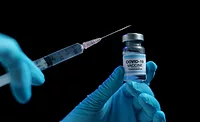COVID-19’s effects on police departments in Illinois, Missouri and Ohio

More than 224.7 million people have contracted COVID-19 worldwide, and 4,633,281 persons perished as of September 13, 2021. By the same date in the United States, more than 40.9 million got the virus, while 659,985 perished. These very sobering statistics from John Hopkins University’s School of Medicine underscore the gravity of this modern-day disease. Likewise, COVID-19 has induced negative effects globally across industries, governments, non-governmental organizations, and non-profit entities, among others.
As the gravity of COVID-19 was recognized and expanded in the United States, we commenced a research project to gauge the impact of the pandemic on law enforcement agencies. Our study began with a survey of more than 200 Illinois police departments during June 2020. Upon receiving results from 73 departments, we replicated the same study in Missouri (30 police departments) and Ohio (97 police departments), respectively (the total number of responses to the survey was 200). The survey results indicate that COVID-19 has significantly affected both the internal and external operations of these states’ police departments. These ramifications are particularly profound as they relate to safety measures and risk mitigation strategies implemented to protect police personnel and the public they serve.
On average, 90% of respondents from Illinois, Missouri and Ohio said new safety measures had been deployed, including measures such as: the distribution of personal protection equipment (PPE), new methodologies to interact with the public, social distancing, encouraging hand washing and use of hand sanitizer, frequent sanitizing of squad cars, and cleaning police stations.
Despite the nearly universal (94%) reporting of the use of new safety procedures, on average, only 68% of respondents believed their departments had an increased interest in their physical and emotional wellness in the states studied. There appears to be some dissonance between these two responses as one might anticipate that adoption of enhanced safety protocols would positively influence employee perceptions regarding employer concern. These somewhat inconsistent answers were proffered because, apparently, some employees perceive that their superiors are not especially worried about their health and welfare despite the fact they acknowledged that safety measures had been taken on their behalf.
Unsurprisingly, 61% of participants perceived that they were at greater risk than before the pandemic. In addition to traditional law enforcement officer safety concerns, for example, the potential for violent encounters, COVID-19 has added another layer of risk. Anxiety regarding disease transmission from the public or during other workplace interactions, and the practical requirements of social distancing, could reduce efficiency and effectiveness of policing to some degree. After all, operational activities used before the pandemic were not restricted by social distancing. Given the characteristics of the virus reported to public health authorities, the transmission may arise from both symptomatic and asymptomatic carriers, more so with those unmasked and unable to socially distance. Still, the ability of public health officials to share with police information about individuals who tested positive for COVID-19 aids police in taking a more secure posture with such individuals.
Illinois, Missouri and Ohio reduced public access to their facilities by 78% on average. A similar percentage lowered their use of community policing activities. Accordingly, community policing services were lessened by over 80% of the departments surveyed. As crime often goes unreported — as demonstrated by often significant disparities between reported crimes and crime victim surveys — the importance of community policing to capture this gap is crucial. Against this backdrop, access to police departments has declined, so that physical accessibility and connection by the public to police has dropped. Also, less community policing means that the police’s understanding of the communities they serve is diminished. As such, reduced knowledge of the criminal activity and other developments in the neighborhoods will likely take root.
A smaller police footprint may engender incipient hostility towards police or less so, depending on police-community relations. In addition, suspension of citizen ride-alongs and citizen academies, as well as the elimination of in-person police-community forums, undermine police-citizen cohesion. Leveraging virtual forums, conference calls and outreach to community leaders in the non-physical world can bridge the limitations on street-level (physical) community links caused by the pandemic.
Reductions in enforcement actions and in-person responses to calls for service were found to be 73% and 69% for all three states on average, respectively. In combination, these declines raise questions regarding the needs of the public being met to the same standard they were prior to COVID-19. New enforcement actions relating to face-covering orders, shelter in place orders, and policing newly-designated essential and non-essential businesses are among the roles absent before this health crisis. In so doing, law enforcement has been placed in an unenviable role of enforcing pandemic-related rules opposed by some vocal constituencies. Interestingly, while facial covering has been encouraged to reduce the transmission of the virus, criminals have used them to hide their identities.
Concomitantly, arrests, traffic stops and investigatory stops have declined mainly nationally. Impediments to traditional policing precipitated by COVID-19 are likely to endure until the disease spread has decelerated. Gun violence, murder, domestic violence and robberies have surged in some large cities during the pandemic. Tangentially pandemic-connected crimes (e.g., aggravated assaults, stabbings and murders of individuals enforcing the use of face coverings or those opposed to face masks) have tragically emerged nationwide. The further fracturing of segments of U.S. society in recent months has also bore witness to a variety of criminal conduct: hate crimes, vehicle attacks, arson and damage to public and private property by individuals of all walks of life. Law enforcement must contend with these new stressors as well.
Next, the survey found that, on average, 76% of police agencies suspended their police academies and in-service training activities. Stopping the flow of new recruits delays the replacement of those who retire, resign, or fall ill. The elimination of in-service training weakens the capabilities and knowledge of existing officers. The need to introduce enhanced police training, especially in light of challenges emerging from the pandemic and protests, is paramount now. Issues ranging from responding to protests, de-escalation techniques, community policing and diversity training appear warranted. Also, the opportunity to assess possible new approaches to policing might be delayed until the virus dissipates.
Likewise, 83% of departments stated they modified their roll call procedures due to COVID-19. Whether such changes to roll call practices hinder information sharing, cohesion within departments and police effectiveness remain to be seen. Other operational findings included that 63% of agencies modified personnel scheduling on average for all three states. Depending on the circumstances, officers were tasked to work remotely and separately. What impact will these adjustments have on productivity, efficacy, teamwork and information sharing within departments during this pandemic? Fifty-nine percent of departments expressed they limited staff access to specific police facilities. What are the consequences on police operations from this reduced physical proximity among colleagues?
As elsewhere within the U.S. labor market, on average, 39% of police departments from three states stated they furloughed or reduced staffing due to COVID-19. These pressures on personnel may result in staff shortages and declining morale. Even before the pandemic, the law enforcement profession was experiencing well-documented difficulties recruiting new officers and lateral hires. Budgetary pressures arising from reduced state and local tax revenues due to lessened business activity during the pandemic will put additional strains on funding new entrants to police departments. Also, the emergence of calls to categorically defund the police or otherwise reduce police budgets going forward introduces unprecedented fiscal uncertainty with likely negative repercussions on the overall recruiting and staffing environment.
The realities of social distancing are also a substantial potential source of individual officer stress. Some members of the public are likely to be on edge due to the consequences of the novel coronavirus. For instance, selected community members have been mostly confined to their homes for weeks or months. Others may have experienced job losses, reduced income, modified living conditions, and added pressures in familial settings and social networks. The increasingly acerbic political climate emanating from the pandemic includes tensions over stay-at-home orders, closure or restrictions on non-essential businesses and different perspectives on the benefits (or mandates) of face coverings and social distancing, changes in work conditions, and calls for school and university openings. All these variables, coupled with protests and anti-police sentiments hastened by the killing of George Floyd and other African Americans by police, make policing particularly challenging at this point.
Comparison of Illinois, Missouri and Ohio
Despite similar results in our 12-item measurement scale among three states, there have been statistically significant differences as well.
Compared to Illinois’s 78%, the state of Missouri decreased its enforcement actions by 66%. While, on average, the decrease of law enforcement actions was 73% in these three states, Missouri’s reductions in law enforcement actions appear to be aggressive compared to Illinois and Ohio.
Another key difference among the states was responses to the calls for service. Accordingly, Illinois limited responses to the calls for service by 76%, while Ohio reduced only by 63%. This indicates that Ohio police carried out calls for services with fewer limitations than police departments in Illinois. This might be due to the violent protests in the greater Chicago area, where many officers were deployed for responding to these protests and violence rather than non-violent service calls. Similarly, Illinois introduced new safety precautions for its personnel by 94% compared to Ohio’s 87%. Although police departments from both states predominantly took measures, Illinois seemed to take personnel safety slightly more seriously than Ohio.
One of the other significant differences between Illinois and Ohio was officers’ physical and emotional wellness concerns. In Illinois, police departments/officers appeared to be more concerned about their physical and emotional wellness compared to Ohio (75% and 61%, respectively). That is, generally speaking, Ohio continued to work and serve their communities, and there were fewer officer concerns over their physical and emotional wellness when two additional other differences (mentioned above) were taken into consideration.
Lastly, Illinois significantly differed from Missouri in terms of suspending police academies or in-service training. While Illinois suspended 82% of in-service training or police academy training, Missouri suspended by 67%. Again, Illinois seemed to take aggressive precautions due to (potentially) protests or higher numbers of covid-19 cases in Chicago and the surrounding area.
Tragically, the Fraternal Order of Police reported that 644 police officers have died from COVID-19, including 13 in Illinois, 12 in Missouri and 16 in Ohio by September 13, 2021. Personnel at police departments of all sizes are at risk of pandemic-caused illness. Small-sized departments are notably vulnerable if multiple members fall ill, must be quarantined, or pass away.
In sum, this study shows that the consequences of COVID-19 on Illinois, Ohio and Missouri’s law enforcement were significant. How long these changes in protocols and viewpoints of police will endure depending on the potency and length of the pandemic. Too, some modifications to policing implemented during the pandemic (e.g., reduced access by the public to department facilities and leveraging technologies) may continue as they might be recognized as improving safety and increasing efficiency in police practices. Although stymied by operational changes and health risks, continued community engagement during the pandemic is critical as it affords law enforcement to serve their constituencies better. The upsurge in COVID-19 cases nationally aggravated by the Delta variant portends that the perils and uncertainty that police face in these three states and elsewhere will endure for the foreseeable future.
This article originally ran in Security, a twice-monthly security-focused eNewsletter for security end users, brought to you by Security Magazine. Subscribe here.
Looking for a reprint of this article?
From high-res PDFs to custom plaques, order your copy today!






